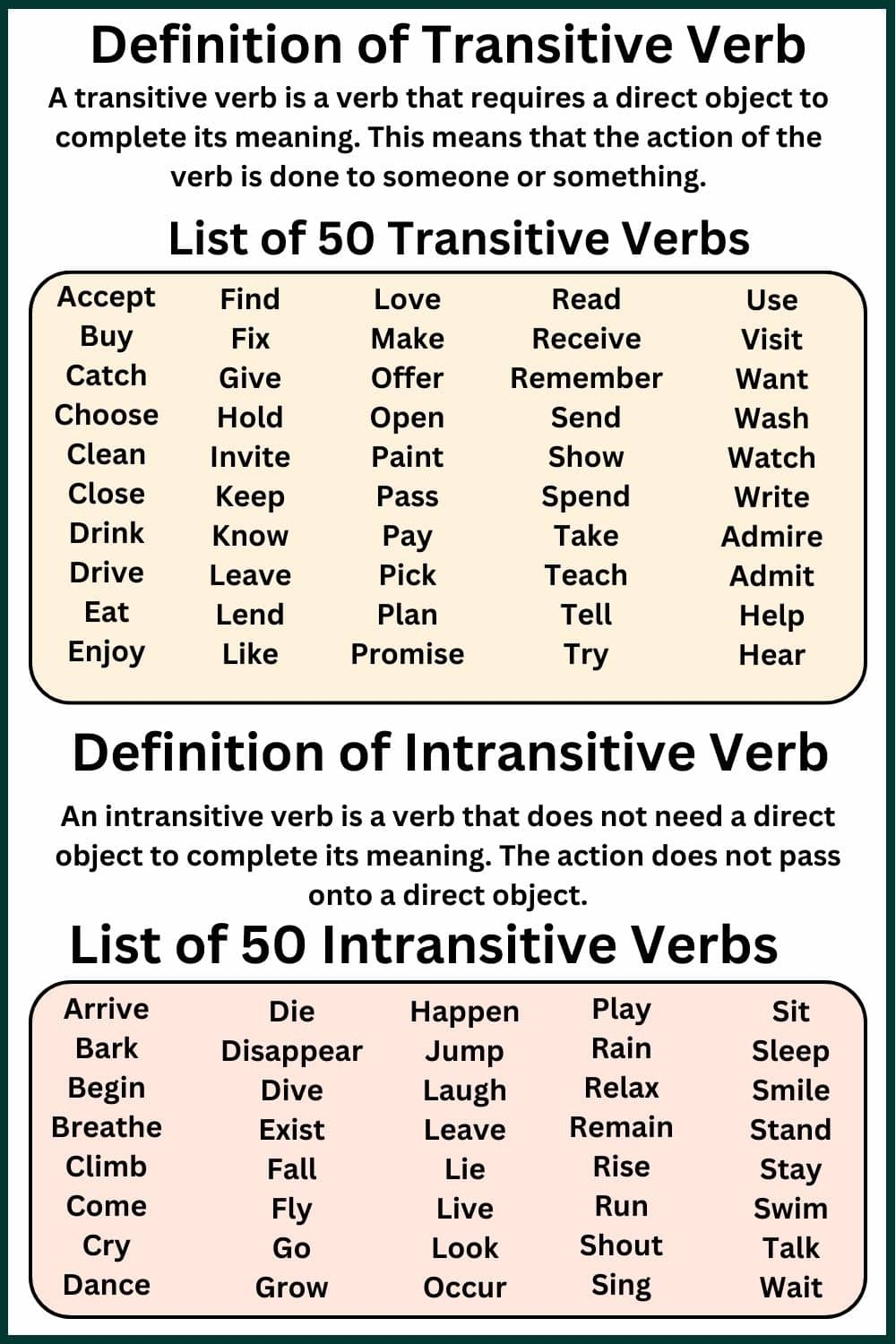Verbs are an essential part of any sentence as they convey action or state of being. When it comes to verbs, they can be classified into two main categories: transitive and intransitive verbs. Understanding the difference between these two types of verbs is crucial for constructing grammatically correct sentences.
In this article, we will delve into the definitions of transitive and intransitive verbs, explore examples of each, and discuss how to identify them in sentences.
What are Transitive and Intransitive Verbs?
Transitive verbs are action verbs that require a direct object to complete their meaning in a sentence. In other words, they need to transfer their action to someone or something. For example, in the sentence “She ate the delicious cake,” the verb “ate” is transitive because it is followed by the direct object “the delicious cake.”
In contrast, intransitive verbs do not require a direct object to complete their meaning in a sentence. These verbs express action or describe a state without transferring it to an object. For example, in the sentence “He ran quickly,” the verb “ran” is intransitive as it does not require a direct object to make sense.
Identifying whether a verb is transitive or intransitive can sometimes be tricky, as some verbs can be used as both depending on the context. It is essential to analyze the sentence structure and determine if the verb is followed by a direct object to classify it correctly.
Additionally, some verbs can change their transitivity based on the prepositions used in the sentence. For example, the verb “look” is usually intransitive, but it becomes transitive when followed by a preposition like “at” in the sentence “She looked at the painting.”
Overall, understanding the distinction between transitive and intransitive verbs is crucial for constructing clear and coherent sentences. By recognizing the role of direct objects in relation to verbs, you can enhance your writing and communication skills.
In conclusion, transitive verbs require a direct object to complete their meaning, while intransitive verbs do not. By grasping the nuances of these two types of verbs, you can improve your grammar and convey your thoughts effectively in writing.
